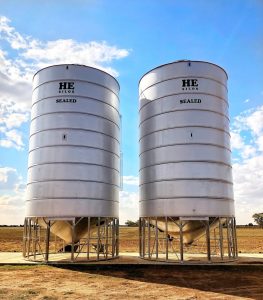Understanding bulk densities and dollar per tonnage

Understanding bulk densities and dollar per tonnage
G’day there and welcome back.
 This week’s topic is all about what bulk densities are and how they work, as well as making sure you understand the dollar per tonnage formula.
This week’s topic is all about what bulk densities are and how they work, as well as making sure you understand the dollar per tonnage formula.Bulk density is defined as the weight of a material including the intergranular air space in the unit volume. That means that if someone refers to the bulk density of wheat in his silo, he means the grain particles and the air space around them. The more slender the grain, the less bulk density.
Bulk density can also change based on how the product is handled. Grain in a full silo may have a higher bulk density at the bottom due to compaction rates, and be less compact at the top.
Other factors that affect bulk density include:
- The filling method, height and rate
- The size and type of the storage space
- The properties of the grain i.e. moisture content, kernel density
- The shape and size of the grain / pellet

The main equation for bulk density is:
cubic metre of silo x density of product = tonnage
In terms of dollar per tonnage, it can be expressed as the following:
- TC = Total Cost
- WM = Weight or Mass of product
- UP = Unit Price of product
Or, for our products here at HE Silos:
4320S (120t Silo) $21290.00 / 120 (tonnes) = $177.41 per tonne
 So it does “pay” to do your calculations, and know the properties of what you are storing, and how much storage you will need!
So it does “pay” to do your calculations, and know the properties of what you are storing, and how much storage you will need!

